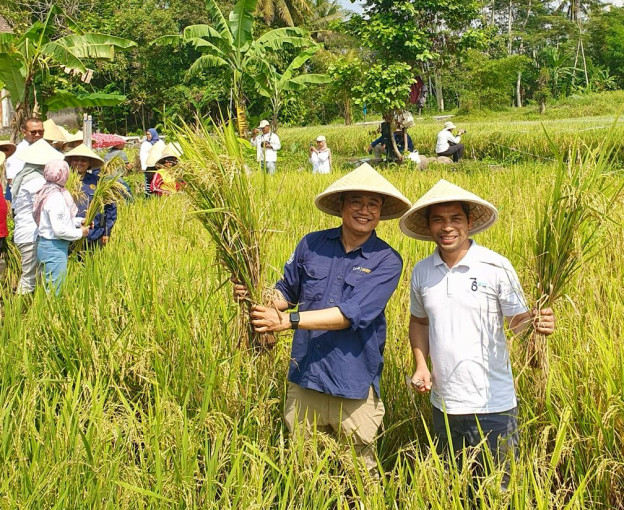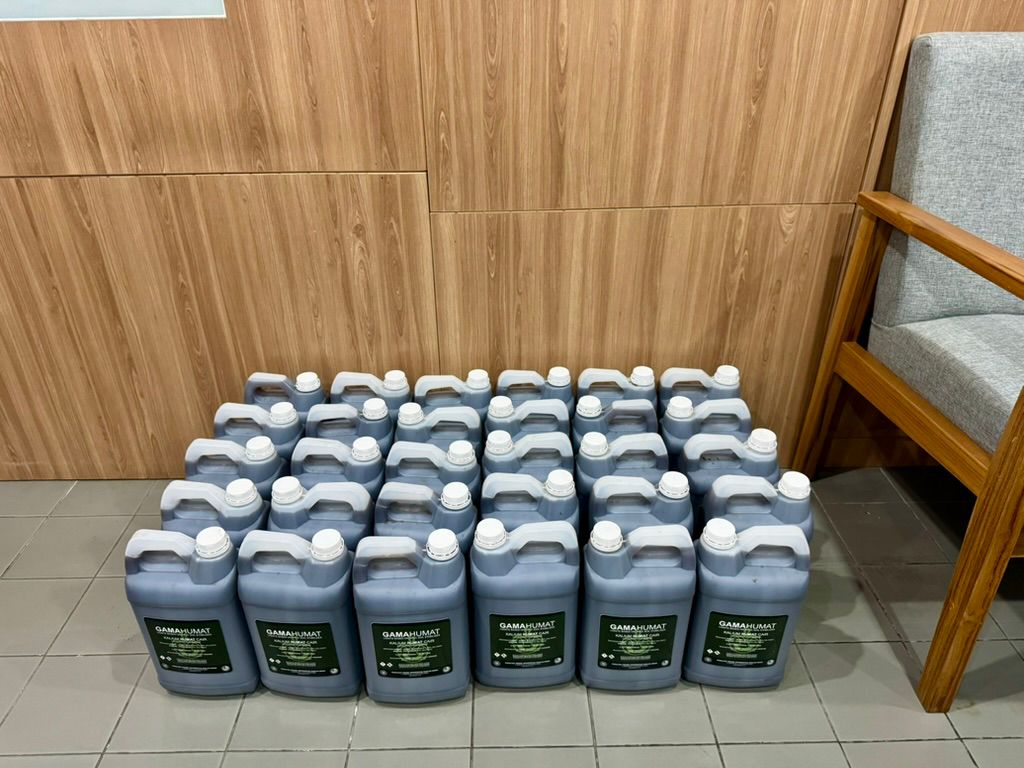
A research team from Universitas Gadjah Mada (UGM) has innovated a way to transform low-calorie coal, which cannot be used as feed coal in Steam Power Plants (PLTU), into a high-value product.
This innovative product, named Gamahumat, serves as a soil conditioner or stabilizer. Gamahumat is a humic compound of humic and fulvic acid derived from low-calorie coal extraction.
Professor Ferian Anggara, the youngest professor in the Department of Geological Engineering, UGM Faculty of Engineering (FT UGM), is the lead researcher behind Gamahumat. The soil conditioner he developed complements fertilizers, reducing the fertilizer needed.
For instance, in a rice field trial plot in Bimomartani, only 15% of the amount of NPK and urea fertilizer was required. Professor Anggara explained that using Gamahumat at a 15% ratio yielded 80% of the results obtained from full NPK-urea usage, reducing fertilizer amounts to 15% to 20% of the normal dosage.
“The harvest results are almost equivalent to using a full dose of NPK and urea,” Professor Anggara told reporters on Wednesday (Oct. 30).
He noted that Indonesia has abundant low-calorie coal resources, comprising up to 30% of its reserves. To ensure a steady supply of raw materials, the professor has partnered with PT Bukit Asam, which holds low-grade coal suitable for Gamahumat production.
This collaboration began in 2018 with support from research funding. In 2023, PT Bukit Asam provided matching funds under the Kedaireka scheme to conduct laboratory analyses to optimize extraction processes and prototype development.
“Currently, the equipment can produce 20 liters of wet humic compounds per day from 5 kg of feed coal,” he said.

Professor Anggara is now advancing Gamahumat to the pilot project phase, with plans to fabricate production equipment in Yogyakarta this year. By 2025, the project will be operational in Peranap, Riau, at PT Bukit Asam’s mining site, which holds 600 million tons of coal reserves.
This plant is expected to operate on a commercial scale and produce 60 tons of humic compounds per year.
“Our objective as researchers is to maximize the value of mining by-products through a circular economy concept,” he said.
The government supports this project under the Inspirasi research scheme through the LPDP (Indonesia Endowment Fund for Education), with three years of funding through 2026.
In addition to Gamahumat, this support is also allocated for developing complementary innovations, including a nano-silica product under 10 microns in size that is easily absorbed by plants and enhances soil nutrient levels.
“This combination targets nutrient-deficient land to make it more arable and increase its productivity,” he explained.
Professor Anggara also introduced a hydrogel product designed as a planting medium containing water, humic acid, and nano-silica. The hydrogel can be placed in areas with limited water, such as reclaimed mining sites or rainfed fields, reducing the need for regular watering at the start of the planting period.
“Once the plant roots are established, they can seek water independently. These three products are part of a research output funded by Inspirasi under the theme of the circular economy,” he added.
Professor Anggara hopes that the innovative products developed by researchers in the Unconventional Geo Resources Research Group (UGRG) at FT UGM will support the goal of achieving national food self-sufficiency, which aligns with the government’s mission.
Author: Bolivia
Editor: Gusti Grehenson

